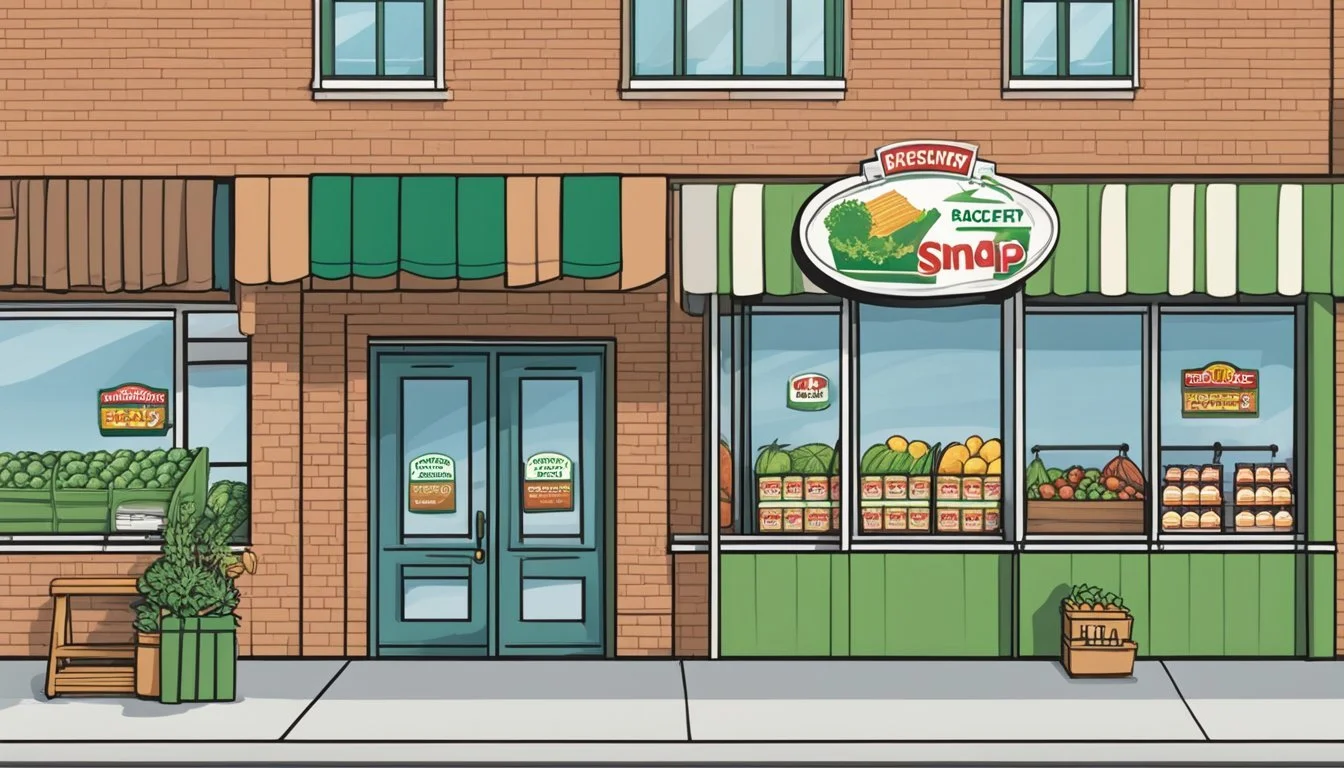Does Piggly Wiggly Take EBT or SNAP?
Payment Options Explained
For many families relying on federal assistance programs like SNAP, knowing where they can use their benefits is crucial. Piggly Wiggly accepts EBT cards as a form of payment, making it a convenient option for shoppers using SNAP. This allows customers to purchase eligible items seamlessly and without hassle.
Piggly Wiggly’s participation in SNAP underscores its commitment to serving diverse communities. Shoppers can confidently head to their local store, knowing they can use their benefits to buy essential groceries such as bread, cereal, fruits, and vegetables.
Understanding how to maximize SNAP benefits is key to making the most of this resource. By visiting Piggly Wiggly and similar authorized retailers, families can ensure they’re choosing stores that support their financial and nutritional needs.
Piggly Wiggly's Acceptance of EBT and SNAP
Piggly Wiggly accepts both EBT and SNAP benefits, allowing customers to purchase eligible food items with their EBT cards. This provides essential accessibility for families receiving Supplemental Nutrition Assistance Program benefits.
Understanding EBT and SNAP
EBT, or Electronic Benefits Transfer, is the method used to distribute SNAP benefits to eligible recipients. SNAP, formerly known as food stamps, stands for Supplemental Nutrition Assistance Program. The program aims to help low-income individuals and families buy nutritious food.
SNAP benefits are loaded onto an EBT card, which operates like a debit card. This card can be used at authorized retailers, including Piggly Wiggly, for purchasing qualifying food items.
Unlike regular credit or debit cards, EBT cards only cover specific items such as bread, cereals, fruits, vegetables, and dairy products.
Eligibility and Payment Process at Piggly Wiggly
To use an EBT card at Piggly Wiggly, customers must first ensure their items are eligible under SNAP guidelines. When checking out, they should separate EBT-eligible products from non-eligible items. This makes the transaction smoother and avoids confusion.
At the register, the cashier will ring up the eligible food items, and the customer can then swipe their EBT card. The customer will need to enter their PIN to complete the transaction. If the purchase includes both eligible and non-eligible items, another form of payment will be needed to cover the rest.
Piggly Wiggly's adoption of EBT and SNAP ensures that their stores are accessible to a wider range of customers, providing an essential service for those relying on SNAP benefits to afford groceries.
State-Specific SNAP Participation
State-specific participation in SNAP varies due to local policies, economic conditions, and population demographics. Understanding these variations can help pinpoint how effectively the program serves different communities.
Variation in SNAP by Location
SNAP participation rates differ significantly across states. For instance, states with higher urban populations like New York and California often have more SNAP recipients due to the larger number of low-income residents.
Rural vs. Urban Areas: In urban areas, the concentration of SNAP-authorized retailers is typically higher, making it easier for recipients to access benefits. Rural areas may experience limited access due to fewer store options.
Use of the SNAP Retailer Locator: The SNAP Retailer Locator tool helps beneficiaries find nearby authorized retailers by entering their location details, ensuring they can identify the most convenient shopping locations.
State Policies and Economic Conditions: States with more lenient eligibility requirements or better outreach programs may see higher participation rates. Conversely, states with stricter requirements may have lower rates.
By examining these factors, we gain valuable insights into how SNAP operates across different regions.
Shopping with EBT Cards at Grocery Stores
When shopping with EBT cards at grocery stores, it is essential to understand both the types of products eligible under SNAP and the restrictions on purchases.
Types of Products Eligible under SNAP
SNAP benefits can be used to purchase a wide variety of grocery items. These include fruits, vegetables, meat, poultry, fish, dairy products, bread, cereal, and rice. Additionally, non-alcoholic beverages, seeds, and plants that produce food are eligible.
Dairy products such as milk, cheese, and whole wheat bread can also be purchased. The program aims to help families maintain a healthy and balanced diet by providing access to essential food groups.
Important Note: SNAP benefits should be used for staple foods that are vital for nutrition. This ensures that recipients get the most out of their benefits.
Restrictions on SNAP Purchases
Certain items are not eligible for purchase with EBT cards. These include alcoholic beverages, tobacco products, and hot foods prepared for immediate consumption.
In addition to these, paper products, cleaning supplies, and other non-food items are also restricted. It is important for shoppers to separate their EBT-eligible items from non-eligible ones at the checkout to avoid any confusion.
Retailers, such as Piggly Wiggly, enforce these restrictions strictly to comply with federal guidelines. Understanding these rules helps ensure that transactions are smooth and compliant with SNAP regulations.
Comparing EBT Acceptance Among Different Retailers
EBT (Electronic Benefit Transfer) acceptance varies across different retailers. This section provides a detailed comparison, emphasizing major grocery chains and their EBT policies.
Major Grocery Chains and EBT Policy
Walmart accepts EBT payments both in-store and online in many states. This makes it convenient for EBT users to purchase groceries.
Target also allows EBT payments, primarily for in-store transactions. Target provides a wide selection of eligible items.
Kroger supports EBT payments in-store, and some locations offer online EBT transactions. Kroger’s multiple brands, like Fred Meyer and Food 4 Less, also accept EBT.
Albertsons and its affiliated stores, such as Safeway and Vons, accept EBT. Albertsons emphasizes fresh produce and staple foods.
Aldi accepts EBT in-store only. Aldi is known for offering affordable groceries, making it a popular choice among EBT users.
Publix allows in-store EBT transactions, focusing on quality produce and groceries. Publix is a well-regarded chain in the Southeastern U.S.
Costco accepts EBT at all locations but does not offer online EBT transactions. Users need a membership to shop at Costco.
CVS provides EBT payment options for eligible items like groceries and health products. CVS stores are widely accessible.
Numerous other retailers, including Food Lion, BJ’s Wholesale Club, Brookshire’s, and Cash Saver, also accept EBT. These stores vary in size and selection, catering to different customer needs.
Amazon is notable for its online EBT acceptance, expanding access to groceries for EBT users. This is especially useful for individuals with limited mobility or transportation.
This comparison illustrates the diversity in EBT acceptance policies among major retailers, helping users find the best options for their needs.
Federal Program Rules for SNAP
The Supplemental Nutrition Assistance Program (SNAP) provides financial aid to low-income families to purchase nutritious foods. The U.S. Department of Agriculture (USDA) administers SNAP, ensuring eligible purchases are made through Electronic Benefit Transfer (EBT) cards.
Electronic Benefit Transfer (EBT) System
The Electronic Benefit Transfer (EBT) system allows SNAP participants to access their benefits via a debit card. This card is loaded monthly with funds and can be used at authorized retailers, like Piggly Wiggly, to buy eligible food items.
Authorized Purchases: Only specific items such as fruits, vegetables, meats, dairy products, and bread can be bought using EBT. Non-food items, alcohol, and hot prepared foods are typically excluded.
Funds Management: Users can check their EBT balance online or by calling a toll-free number, ensuring they manage their benefits effectively. This helps avoid surprises at checkout.
The EBT system ensures the seamless distribution and tracking of SNAP benefits, enhancing efficiency and reducing fraud.
Additional SNAP and EBT Resources
To maximize the benefits provided by SNAP and EBT, it is important to know where these benefits can be used and to stay informed on nutritional assistance programs.
Finding SNAP Retailers and Understanding Benefits
Locating stores that accept SNAP and EBT is simple. Major grocery chains like Piggly Wiggly, Walmart, and Kroger all accept these benefits. Specialty stores and farmers markets often participate as well. To find a participating retailer, use the SNAP Retailer Locator provided by the USDA.
Understanding what can be purchased is crucial. Staple foods like bread, fruits, vegetables, and meat are eligible. Items such as household supplies and non-food products are not. Always check your EBT balance before shopping to avoid issues at checkout.
Educational Resources on Nutritional Assistance
Several resources educate users on making the most out of their SNAP and EBT benefits. The USDA website offers extensive guidelines on eligible items and provides tips for healthy eating on a budget. Local agencies often provide workshops and classes on nutritional assistance, helping recipients to plan meals effectively and manage benefits.
Using online resources like the SNAP-Ed Connection can aid in learning about programs and services available to EBT users. Community organizations also often offer printed materials and in-person guidance to further support healthy food choices.





